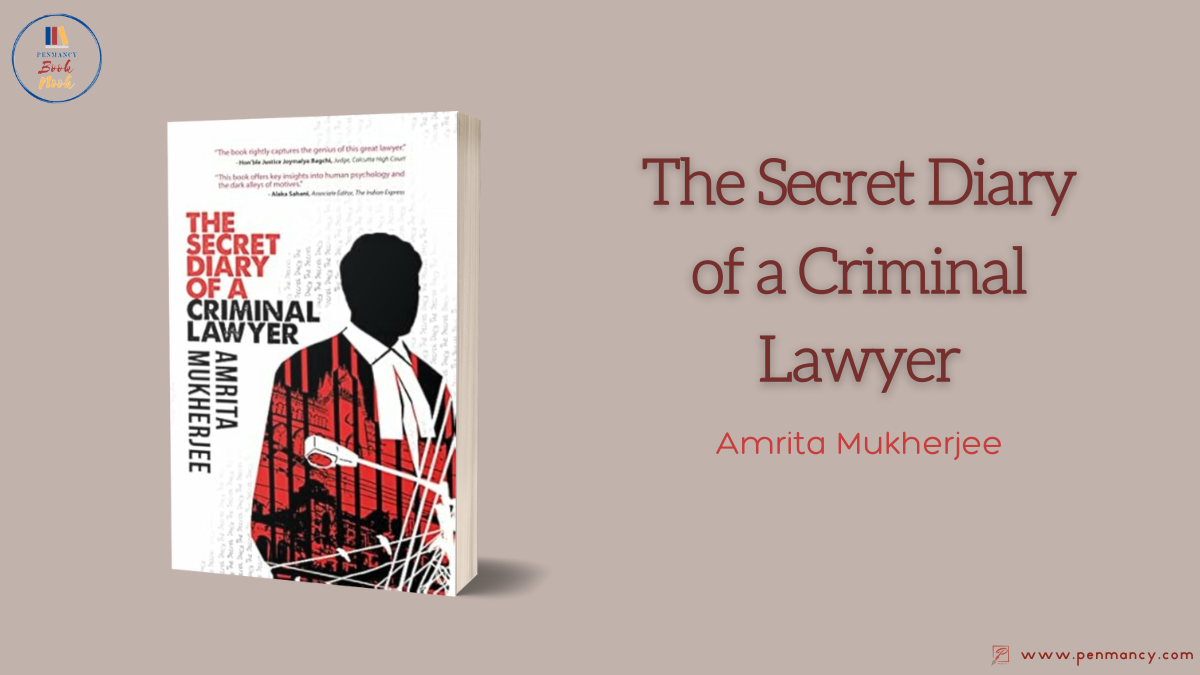
Amrita Mukherjee’s The Secret Diary of a Criminal Lawyer is a compelling collection of ten gripping cases from the illustrious career of Ashok Mukherjee, one of Kolkata’s finest criminal lawyers. Each case peels back the layers of the human psyche and reveals the complexity of moral and ethical dilemmas faced by individuals caught in the throes of crime.
One of the standout features of this book is its accessible narrative style. The author’s prose is clear and engaging, making it easy for readers, regardless of their familiarity with legal jargon, to follow the intricacies of each case. The language is straightforward and paints a detailed picture of the events and characters.
Mukherjee’s vivid descriptions of old Calcutta and its cultural milieu add a rich, nostalgic layer to the narrative. The settings are so meticulously crafted that we can almost visualize the bustling streets, the colonial architecture, and the vibrant cultural life of the city in a bygone era. This attention to detail not only enhances the storytelling but also provides an accurate historical context that deepens our understanding of the social and cultural dynamics at play in each case.
While the book deals with criminal cases, it is the portrayal of the human side of these events that steals the show. Each story delves into the personal and emotional struggles of the people involved, from a father’s heart-wrenching dilemma in choosing between his dead son and his convicted one, to a mother’s attempt to reform her violent son through love. These narratives challenge us to question the very nature of crime and justice. Is there such a thing as absolute right or wrong, or are we all merely victims of our circumstances? This philosophical underpinning adds depth to the stories and encourages us to reflect on our beliefs about morality and justice.
The relevant Indian Penal Code (IPC) Acts and criminal procedures are explained at the end of each story. These explanations elevate the book’s educational value, helping us gain a clearer understanding of the legal principles and procedures.
Several cases in the book stand out for their emotional and legal complexity. The case of the brother who killed his sibling in a fit of rage explores the thin line between momentary lapses of control and premeditated acts of violence. Another story delves into the tragic love story of an underworld kingpin, raising questions about redemption and the possibility of a happily-ever-after in the criminal underworld.
Mukherjee’s portrayal of a revered school teacher who turns into a monster and a tormented mother who sends her son to jail adds further layers of intrigue and moral ambiguity. These stories force us to confront uncomfortable truths about human nature and the societal factors that contribute to criminal behaviour.
Some readers might find the focus on legal technicalities tedious, especially when it appears that the defense hinges on minor procedural points. It may be perceived as the lawyer trying to acquit the criminal on technicalities. For example, the story about the underworld don highlights the grueling process that assault victims undergo while recounting their experiences. It shows how any inconsistencies in testimony, whether intentional or unintentional, can be exploited to strengthen the defense’s case. This aspect of the book provides a sobering reminder of the challenges faced by both victims and legal professionals in the pursuit of justice.
It is important to remember that the burden of proof in criminal trials requires establishing guilt beyond any reasonable doubt. The book’s focus is a realistic depiction of the criminal justice system, where every detail can make a significant difference in the outcome of a case.
The Secret Diary of a Criminal Lawyer is a riveting exploration of the criminal justice system through the lens of one of Kolkata’s most skilled lawyers. It challenges readers to rethink their notions of crime and justice while providing a fascinating glimpse into the complexities of criminal law.
For readers interested in legal dramas, true crime stories, and explorations of the human psyche, this book offers a wealth of insights and thrilling narratives. While it may not be for everyone, those willing to engage with its deeper themes will find it a rewarding and thought-provoking read.
